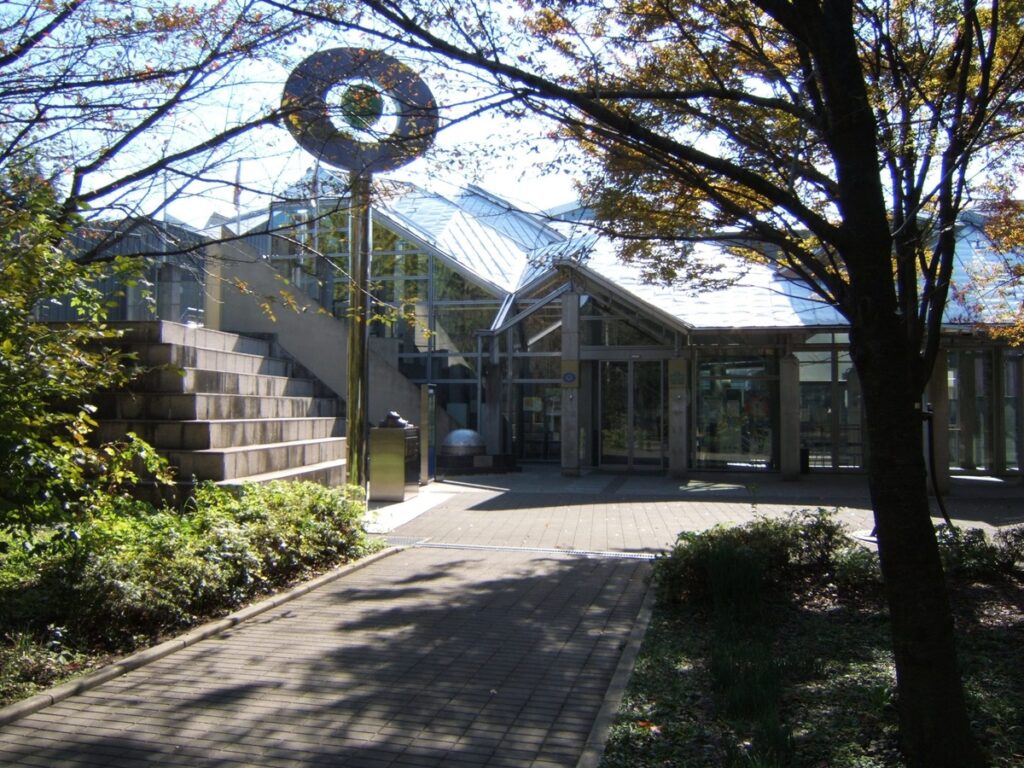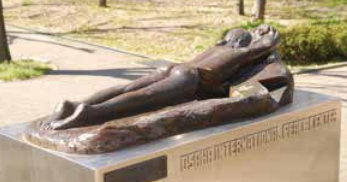
Basic information
Location: 2-1 Osakajo, Chuo-ku, Osaka, 540-0002
Phone: +81-6-6947-7208
Fax: +81-6-6943-6080
Hours: 9.30am to 5.00pm; closed on Mondays
Overview
The Osaka International Peace Center, also known as Peace Osaka, was built in 1991 as a symbol of hope for the attainment of global peace. (Hein and Takenaka, 2007) The Museum’s current mission statement is to remember the victims of the air raids on Osaka and pray for peace. Through exhibits and documents, the Museum allows visitors to re-experience the misery of war. Ultimately, the Museum wants visitors to be immersed in the daily lives of those who lived through the Second World War and, hopefully, gain insight into what it was like to live through the terror and hardships. (Hein and Takenaka, 2007)
The Museum was founded by human rights organizations, the families of veterans, and other organizations devoted to peace and women’s issues. It is a rare example of an institution in Japan showing the atrocities committed by the Japanese armed forces in addition to the tragedies suffered by the Japanese people. (Kingston, 2015) As a result, it was criticized by conservative groups who called the depiction of Japanese history “masochistic”. (War museum may scale back, 2013) In 2015, conservative activists succeeded in changing the Museum’s exhibits.
Before 2015, a plaque stated that Japan “caused great hardships on the peoples of the Asia and Pacific regions [and] the battlefields of the 15-year war” and declared that the Museum was a place for “dispassionate and unpretentious reflection.” (Seltz, 1999) To achieve these goals, there were three exhibition rooms. The first, called Exhibition Room A, covered the bombing of Osaka and other aspects of wartime life in Japan. Visitors could see “replicas of the bombs that fell, a diorama and stark photos of the city after it was hit, wartime newsreels, audio tapes of witnesses, [and] a replica of a Japanese home with a bomb shelter”. (Burress, 1992)


Exhibition Room B examined the Greater East Asia Co-Prosperity Sphere and was very critical of the Imperial Japanese Army’s conduct in Korea, China, the Philippines, and elsewhere. Exhibition Room C focused on the threat of nuclear weapons while arguing that there were many other threats to world peace, including starvation, poverty, and environmental destruction. (Peace Osaka) These exhibits presented a relatively balanced portrayal of the war which I feel could promote peace through accepting the ways in which humanity has wronged itself over and over.
After 2015, the Museum removed many objects and documents that it had previously exhibited. Most notably, all mentions of the Nanjing Massacre were removed, along with many other aspects of Japan’s invasion of China and other Asian-Pacific nations. The three exhibition rooms were sub-divided into six smaller zones that presented Japan as a victim of external aggression. The United States, in particular, was now seen in a much less favorable light. (Peace museum, 2015)

The current displays of Peace Osaka, while a valid representation of the suffering of the Osaka residents and military stationed there, no longer offer the complete picture of the war. Curators no longer narrate leaving interpretation of exhibits up to the viewer. (Hein and Takenaka, 2007). It is still a valuable source to promote peace but I feel that only when nations are accepting of the wrongs they have caused to others, and are able to put them on display will we truly be able to navigate more peaceful relations.
Cultural analysis
The website for Peace Osaka offers a translation into English, but it is in Japanese initially. It does not translate everything on the page. Nor does it provide an English version of the pamphlet that is fairly informative and gives a statement of the purpose of the Museum.
As Peace Osaka’s analysis in 1991, “Lasting global peace, humankind’s most fervent and elusive aspiration, can be achieved only if the peoples of the world can gather to share and discuss their first-hand experiences of the devastating consequences of war.” (Burress, 1992) The 2015 renovation of Peace Osaka undermined a lot of that message but, as long as the museum stands, it is not lost yet.
References
- Burress, C. (1992, August 9). Japanese come face-to-face with wartime past. St. Petersburg Times. Retrieved from http://ezproxy.guilford.edu/login?url=https://www.proquest.com/newspapers/japanese-come-face-with-wartime-past/docview/262905209/se-2
- Hein, L. and Takenaka, A. (2007). Exhibiting World War II in Japan and the United States since 1995. Pacific Historical Review 76, no. 1: 61–94. DOI: 10.1525/phr.2007.76.1.61
- Kingston, J. (2015, June 6). History is harsh unless you erase it. The Japan Times. Retrieved from https://www.japantimes.co.jp/opinion/2015/06/06/commentary/history-harsh-unless-erase/
- Mason, G. and Joseph, P. (2002). Moving beyond accusation and self pity. Peace Review 14, no. 4: 465-480. DOI: 10.1080/1040265022000039268
- Peace museum, caving in to threats of closure, scraps wartime ‘aggression’ exhibits. (2015, May 1). The Asahi Shimbun. Retrieved from http://ajw.asahi.com/article/behind_news/social_affairs/AJ201505010073
- Peace Osaka. (n.d.) http://www.peace-osaka.or.jp/
- Seltz, D. (1999). Remembering the war and the atomic bombs: New museums, new approaches. Radical History Review 75: 92-108.
- War museum may scale back on Japan aggression. (2013, September 14). The Japan Times. Retrieved from https://www.japantimes.co.jp/news/2013/09/14/national/war-museum-may-scale-back-on-japan-aggression/